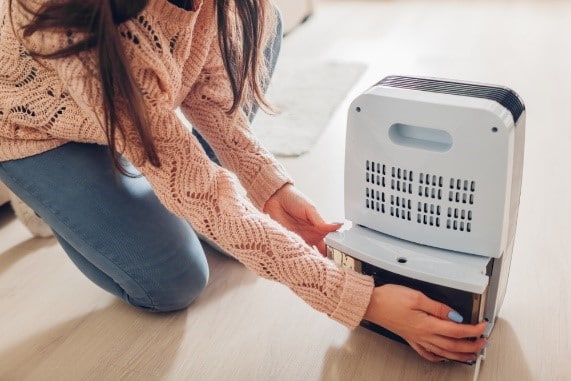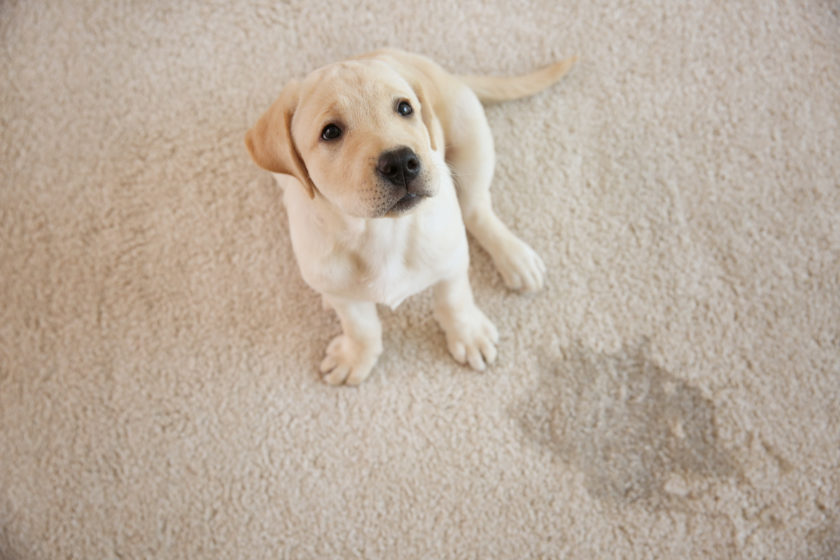You can’t deny that dehumidifiers are a lifesaver in enhancing the comfort of indoor environments by diminishing the level of humidity. They do so by pulling air via a fan, after which it cools on the coils before they reheat and emit it.
The collected water collects in a bucket that must be emptied when full. In addition to that, other essential things go into the proper maintenance of a dehumidifier. For instance, if you don’t keep it spick and span, it loses efficacy and wastes energy.
With that being said, our guide will walk you through everything you need to know about how to clean a dehumidifier to ensure it continues serving you well for years down the road.
Should You Clean Your Dehumidifier?
In a nutshell, yes! Although it doesn’t seem like a no-brainer, you’d be surprised by how filthy a dehumidifier can get, which is why regular cleaning is paramount, depending on usage. Making sure the air filter is clean will have a significant positive impact on the unit’s performance and efficiency.
Mold spores or mildew are the last things you want to grow in the tank or water basket since they can make their way into the air you breathe.
How Frequently Should You Clean Your Dehumidifier?
Dehumidifiers call for frequent cleaning for optimum functioning. Therefore, we recommend a thorough clean once every three weeks to a month with frequent use. After all, water damage can occur unexpectedly in your commercial premises or home due to a burst pipe, malfunctioned appliances, or severe weather.
While flooding is inevitable at times, a well-functioning dehumidifier can be the Holy Grail in drawing moisture from the air, your floors, and walls, reducing the damage and keeping your property moisture-free.
A Step-By-Step Process: How to Clean Dehumidifier

Dehumidifiers consist of various essential parts, including a reservoir and an air filter that won’t function as they should if they are filthy. Here’s how to clean a dehumidifier.
1. Unplug
The first step before you clean your dehumidifier is to unplug it from the power outlet to ensure it’s entirely safe to handle.
2. Clean the Outer Surface
A dehumidifier draws in air through vents. Consequentially, there can be a considerable amount of dirt and dust. You will also find the outer shell traps larger debris that makes its way into the unit. Therefore, to clean the exterior, use a dry, clean microfiber cloth to wipe off the buildup of muck and dirt.
If a dry cloth isn’t getting the job done, you can wet it slightly to make it damp enough to remove the filth. Good old elbow grease might also be required. As a tip, avoid spraying solvents or water directly onto the outer surface as doing so leaves the electrical components and interior of the dehumidifier susceptible to damage.
3. Clean the Tank
The dehumidifier reservoir or tank of the dehumidifier is where all the extracted water (humidity) in the air collects. Besides emptying the reservoir each time it gets full, it’s essential to clean it regularly. If not, mold spores and mildew unarguably grow within the tank and contaminate the air in your home. Ultimately, this may trigger asthma and allergies in sensitive people.
To avoid resigning yourself to this fate:
- Sanitize and clean the water tank by emptying it
- Fill it about ¼ of the way with warm, clean water mixed with two squirts of dish soap
- Scrub it with a sponge, ensuring you get into every corner
- After a thorough scrub, empty the contents of the reservoir and spray it with pure vinegar
- Although the smell is strong, fret not as it’ll dissipate once it dries
- Let the vinegar sit for up to 15 minutes, then wipe the reservoir with a damp cloth and leave it to dry
- Once the tank is completely dry, reinstall it back into the dehumidifier
- If your dehumidifier is draining via a hose to a nearby drain, there’s a chance it’s contaminated with mold. That’s your cue to remove the hose and flush it using white vinegar
It’s worth keeping in mind that vinegar is a foolproof and natural disinfectant. While most people use bleach to get rid of mold, we recommend opting for vinegar except for the active mold growth in the tank.
4. Clean the Dehumidifier Filter
While you may not realize it, the dehumidifier filter plays a crucial role in protecting the interior of the dehumidifier, including its components, while purifying your dry air. If it’s filthy and filled with grime, the unit won’t function as it should, which means air won’t pass through. If you’re uncertain as to where to find the filter, check the manual.
In some dehumidifiers, the dehumidifier filter is located at the back, allowing you to slide it out after removing the reservoir. Once you take out the filter, examine it carefully to determine whether it’s due for a replacement.
Although most dehumidifiers use reusable or washable filters, they require replacement after a while. If the filter is still usable, a quick vacuum clean will effectively eliminate dust and dirt.
Next, take a large container and mix a mild detergent with warm water. Once you soak the air filter in the soapy solution for up 20 minutes, remove it and allow it to completely dry before you put it back into the dehumidifier.
It’s worth noting that most dehumidifiers come with a guide on the best way to clean the air filter. While some only require vacuuming, other filters call for mild detergent in warm water to get the cleaning job done. To make sure you’re not damaging the filter, refer to the manual.
5. Clean the Bucket Filter
Although you may not be aware, the bucket filter traps impurities that find their way into the dehumidifier. Not all units contain this small filter, but it’s essential to clean it to prevent clogs if yours does. To do so, take it out and rinse it with warm rather than hot water and let it dry before putting it back into position.
6. Plug It Back In
Once you clean all the components of your dehumidifier and allow them to dry completely, it’s time to put them back into position. After doing so, plug the dehumidifier into a power outlet to check if it’s functioning as it should.
Next, examine the display for any signs of faults or malfunctions. Lastly, allow the unit to run for one to two hours before assessing the reservoir and humidity levels.
To Wrap Up
Keeping your dehumidifier spick and span is imperative to your health, particularly before the buildup of mold, mildew, dust, and dirt. Turning a blind eye could mean that you’re breathing these impurities that can trigger immediate allergies, asthma attacks, and long-term repercussions such as lung disease and other respiratory issues.
Most dehumidifiers come with a guide on how frequently it needs cleaning and when to replace the air filter. Some newer models have indicators on display to alert you. Nevertheless, it’s still essential to conduct a thorough inspection of the dehumidifier bucket and filter.
The good news is that you don’t require any unique cleaners or products to maintain your dehumidifier. Warm water, mild detergent, and vinegar will get the job done.

